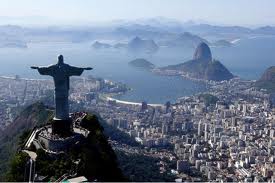Sao Paulo, Brazil – 5 April 2017 –
Despite an increase in demand, hotels in Rio de Janeiro reported lower occupancy levels during this year’s Carnival of Brazil, according to data from STR.
Rio occupancy decreased 12.1% when comparing Carnival 2017 (24-28 February) with Carnival 2016 (5-9 February). However, demand (actual number of rooms sold) increased 3.5% using the same comparison.
 “The steep occupancy decline was not shocking given the substantial amount of new supply that entered the market ahead of the Olympics,” said Patricia Boo, STR’s area director for Central/South America. “Looking strictly at year-over-year occupancy performance does not always tell the full story. When you consider that Rio’s demand was higher for Carnival this year, you see just how much of an impact supply growth has had on this market.”
“The steep occupancy decline was not shocking given the substantial amount of new supply that entered the market ahead of the Olympics,” said Patricia Boo, STR’s area director for Central/South America. “Looking strictly at year-over-year occupancy performance does not always tell the full story. When you consider that Rio’s demand was higher for Carnival this year, you see just how much of an impact supply growth has had on this market.”
According to Riotur, Rio’s tourism agency, the city expected more than 1.1 million tourists during Carnival, an increase from an estimated 1 million in 2016. Meanwhile, STR data for Rio showed a 17.8% year-over-year increase in hotel supply for February.
“The steep occupancy decline was not shocking given the substantial amount of new supply that entered the market ahead of the Olympics,” said Patricia Boo, STR’s area director for Central/South America.
Looking at daily performance, Rio’s occupancy peaked on day three of the celebration (26 February: 77.8%) but fell short of the 2016 peak, which also occured on day three (7 February: 83.6%). Average daily rate (ADR), down 22.0% during Carnival 2017, fell in line with Brazil’s economic recession.
Even with lower occupancy and ADR levels than last year, Carnival once again provided a boost to local hotels. Rio’s occupancy during the five-day period was 43.5% higher than the average of all other days in February, and ADR was 84.6% higher.
While Rio is Brazil’s main attraction for Carnival, other key markets did see occupancy growth during the celebration. São Paulo hotels recorded a 7.1% lift in occupancy during the celebration. However, the market’s actual occupancy level (37.6%) was still quite low. Also benefitting from the event was Salvador, with a 19.3% increase in occupancy for the month. Recife posted nearly flat (+0.2%) occupancy in February.
For the entire month, ADR was down across all key Brazilian markets: Rio (-21.2%), São Paulo (-9.2%), Salvador (-10.8%) and Recife (-1.6%).

